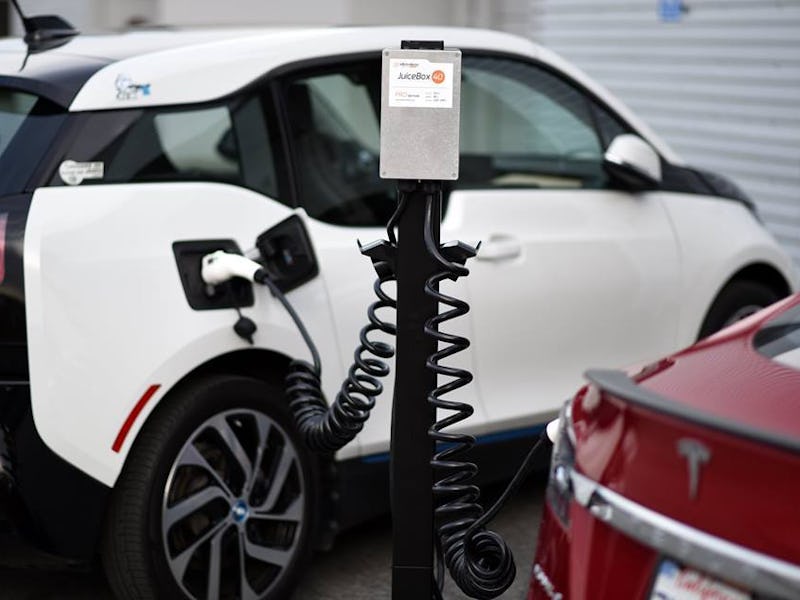How a Battery Breakthrough May Lead to Electric Cars That Charge in Seconds
Why "flow batteries" might be the answer.

An impediment to electric car adoption is the fact that they can take a long time to charge. That means for people to be able to actually use their cars to travel long distances (an understandable aspiration, to be sure) widespread electric car adoption would also require the widespread installation of charging stations. Thankfully some Scottish chemists think they have a plan that can kick this process into hyper speed.
It relies on a new method of energy storage called a flow battery, and essentially uses a dense liquid that’s filled with highly charged nano-molecules that store power. Crucially, once the energy is released either as electricity or hydrogen gas, it can be replaced and then re-charged for the next car in a process that’s not unlike the process of gassing up your car at a conventional tank, except the fuel itself could be recycled.
“For future renewables to be effective high capacity and flexible energy storage systems are needed to smooth out the peaks and troughs in supply,” Professor Leroy (Lee) Cronin told the University of Glasgow news. “Our approach will provide a new route to do this electrochemically.”
Their paper, “Highly reduced and protonated aqueous solutions of [P2W18O62]6− for on-demand hydrogen generation and energy storage” was published Monday in Nature Chemistry.
The race is on to deliver batteries that can cheaply and efficiently outmode fossil fuels.
Who Is Building the Best Batteries?
On the other hand, so-called “battery breakthroughs” aren’t particularly uncommon.
Back at the start of June, researchers at the Michigan Technological University had a breakthrough in the field of solid state batteries, which try to increase efficiency by replacing the liquids in batteries with a solid conductor. At the time they told Inverse their solution could pose a long term replacement for electric car batteries with charges that last up to 300 miles.
Barely a month ago, some researchers from Norway claimed that they had actually developed the next breakthrough in battery technology by developing a new technique that substitutes the graphite found in lithium batteries’ with silicon. According to CleanTechnica those researchers said their innovation could lead to electric cars that sustain a charge for 600 miles or more.
So why do we get so many breakthroughs that don’t seem to amount to much? A 2015 book called the Powerhouse details how promising innovations in energy storage quickly collide with reality. According to a review of the book in MIT Technology Review, battery innovation is particularly susceptible to unanticipated setbacks.
In the case described in Powerhouse, a company called Envia tried to develop a new battery by incorporating two new experimental materials into its electrodes. While it worked at first, the battery degraded over time ways the researchers behind it couldn’t fully understand, let alone fix.
In other words, we know so little about how batteries work we have trouble studying the batteries we already have and finding ways to make them better. Fortunately, lots of smart people — backed by lots of money — are hard at work on a fix.